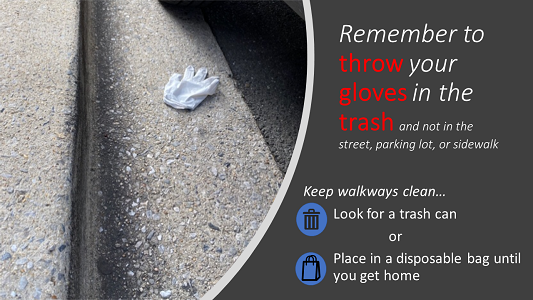Stormwater Discharges from Transportation Sources-Case Studies

With the challenges of climate change, impaired waters, and population and development growth, transportation entities are thinking beyond the right-of-way and approaching stormwater on a broader, watershed scale. New development and redevelopment projects are not only altering or creating new conveyance systems, but also incorporating effective stormwater BMPs—including green infrastructure and green street techniques—to reduce stormwater flow. Creating pervious biking/walking paths and curbside vegetation (e.g., bioretention areas) are just two of the many ways to incorporate these techniques.
Highway/Interstate
- Construction and Maintence Practices for Permeable Friction Courses (PDF)(133 pp, 4.52 MB, About PDF) Exit— These overlays are a layer of pervious material on top of an impervious layer. This practice has been shown to have multiple environmental and safety benefits.
- Compost Use on State Highway Applications: Current Compost Usage by State DOTs — This report provides benefits, tools, and state DOT case studies of compost being used for roadside applications.
- Strategies to Mitigate the Impacts of Chloride Roadway Deicers on the Natural Environment (108 pp, 3 K, About PDF) Exit-- A synthesis of strategies used by tranportation agencies to mitigate environmental harm from chlorides in deicing agents.
Local Roads and Streets
- Complete Streets —Learn how transportation agencies are instituting complete streets policies, providing a more balanced transportation infrastructure resulting in reduced vehicle-related pollutants, and providing opportunities for improved stormwater management.
- Greening DC Streets —Washington, DC Department of Transportation is implementing a model green streets for the District of Columbia.
- Street Reconstruction with Pervious Pavers in Westmoreland Neighborhood of portland, Oregon —This project as part of Portland Green Streets uses a variety of pavement materials to show how the materials manage stormwater and maintain as a street surface.
- Green Streets: A Conceptual Guide to Effective Green Streets Design Solutions —This guide for green street designs shows that they provide better environmental performance for residential, commercial, arterial streets, and alleys.
- Green Streets —This web page provides a link to the Municipal Handbook for managing wet weather with green infrastructure/green streets and additional links on its home page for more information.
Alleys
- The Chicago Green Alley Handbook —The Chicago Department of Transportation is working on a green streets pilot project to construct and measure the performance of a complete street/green street infrastructure.
Shared Use Paths
- Springwater on the Willamette Trail Exit —This bike trail in Portland, Oregon, was constructed from porous asphalt to capture stormwater.
- Connections - The National Transportation Enhancement Clearinghouse Newsletter —The beautification of 92nd Avenue in Portland, Oregon, included the construction of a sidewalk, a bike lane, lighting, and stormwater quality and detention swales.
Outfall Specific
- Coastal Stormwater BMPs Exit —North Carolina Department of Transportation works with Kure Beach to reduce stormwater using a dune infiltration system.
- Stormwater Curb Extension —The Portland Bureau of Transportation retrofitted a residential collector into a vegetative curb extension. This project incorporates a ramp for pedestrian use and captures, treats, and infiltrates runoff.
- Stormwater Planters —As part of Portland Green Street projects, a series of stormwater planters are structured so that intense storm events can be captured while maintaining pedestrian circulation and street parking.
